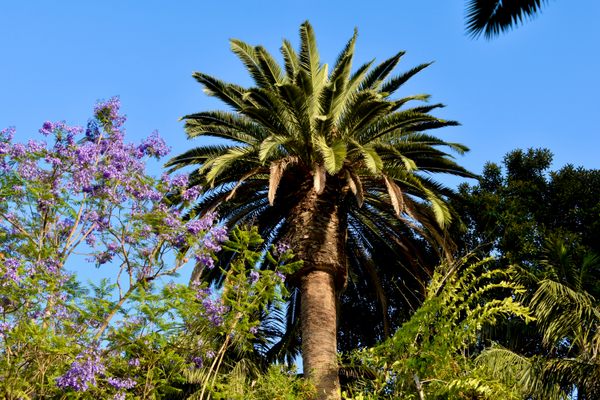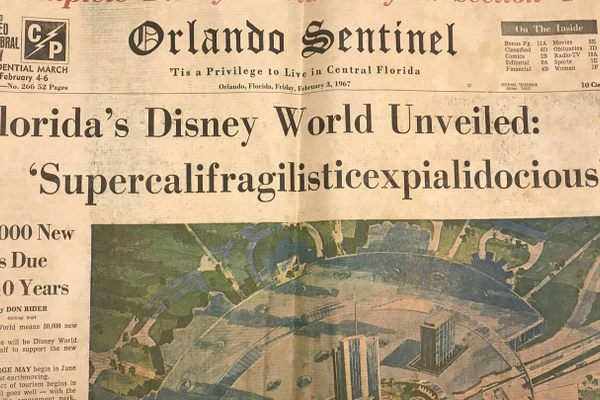Children's Fairyland
This Oakland fairytale kingdom, fiercely devoted to childlike whimsy, was an early inspiration for Disneyland.
Once upon a time, almost 65 years ago, one of the first storybook theme parks in America was created to provide a tangible world of fairytale settings, catering to almost exclusively to small children and their rampant imaginations.
In 1948 nurseryman Arthur Navlet proposed his theme park, Children’s Fairyland, to the city of Oakland and the Lake Merritt Breakfast Club, a Lake Merritt Park improvement advocacy group that still exists today. The proposal was immediately approved, and funded to create a 10 acre park containing nearly 40 storybook themed settings, live animals, gentle rides, puppet theaters, and fantasy-themed gardens.
Navlet traveled the United States, visiting nurseries and researching zoos, aquariums, and amusement parks for inspiration. Other parks and zoos exhibited live animals in iron cages, but Navlet wanted to design a landscape of fantasy scenery where children could incite their imaginations and mingle with the animals, like a miniature interactive zoo.
William Penn Mott Jr., Superintendent of Oakland Parks in 1946, and later Director of National Parks under Ronald Reagan, was a strong proponent for Fairyland’s development and quickly helped to precipitate the park’s construction.
The storybook sets were designed by local architect and artist William Russell Everitt, who studied art at the Sorbonne in Paris before settling in Oakland. According to Creating a Fairyland by Randal J. Metz and Tony Jonick, Everitt presented his original model for the Merry Miller’s cottage to Mott, who found it too rigid and square. Everitt allegedly destroyed the chided model with a baseball bat and returned days later with a new cottage, this time misshapen and garishly colored to match a child’s unique perspective.
When it opened its Mother-Goose-motif doors in 1950, the cost for a child’s ticket was just nine cents a pop. Fairyland has always upheld the rule that no adult shall be admitted without a child, and vice versa. Today’s admission per child over one is $10. At the gate for an additional $3 fee a sacred “Magic Key” is bestowed upon the child who may use it to unlock odd, muffled audio recordings of fairytale excerpts.
On his tour of American amusement parks in 1950, Walt Disney paid a visit to Children’s Fairyland to gather inspiration for his own theme park. He poached the park’s director, Dorothy Manes, to work as Disneyland’s youth director, as well as puppeteer Bob Mills to operate Tinkerbell’s Toy Shoppe.
The renowned Frank Oz, puppeteer, director, actor, voice of Fozzie Bear, Miss Piggy, and Yoda, among scads of others, found his beginnings at Fairyland as well. His parents, Mike and Frances Oznowicz, immigrated to the United States and worked as puppeteers in Oakland. As a teenager Frank also worked at Fairyland, performing as a puppeteer with the Oakland Recreation Department’s Vagabond Puppets, directed by Lettie Schubert. When he was a plucky senior in high school, Oz met Jim Henson at the Puppeteers of America convention. The young Oz had already earned the position of director of Vagabond Puppets, whose show motivated Henson to hire Oz straightaway to work on his new project, the Muppets.
Children’s Fairyland still thrives as a magical destination for fantastically-minded youngsters and their adults. Rides are gentle and geared toward smaller children.
Visit now and you can also catch a glimpse of Oatmeal and Raisin, Fairyland’s Olde English “Babydoll” Southdown Sheep.
Know Before You Go
No adult is admitted without a child, and no child is admitted without an adult. Once or twice a year, there are events for adults only. These are listed on their website.


















Follow us on Twitter to get the latest on the world's hidden wonders.
Like us on Facebook to get the latest on the world's hidden wonders.
Follow us on Twitter Like us on Facebook